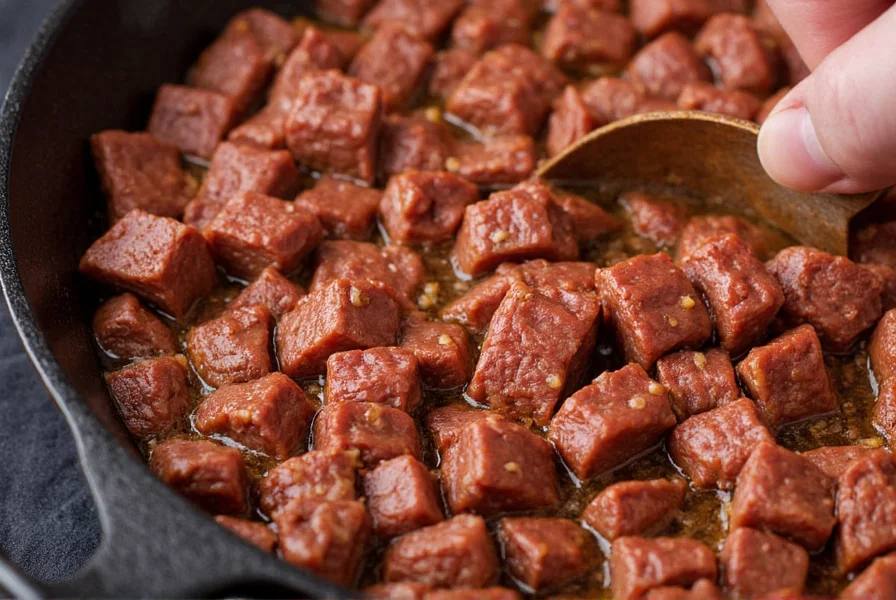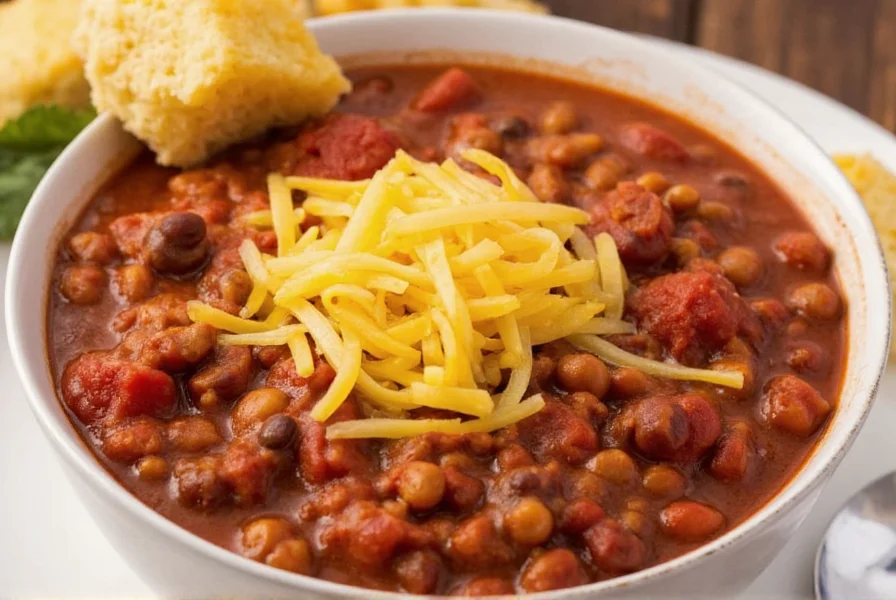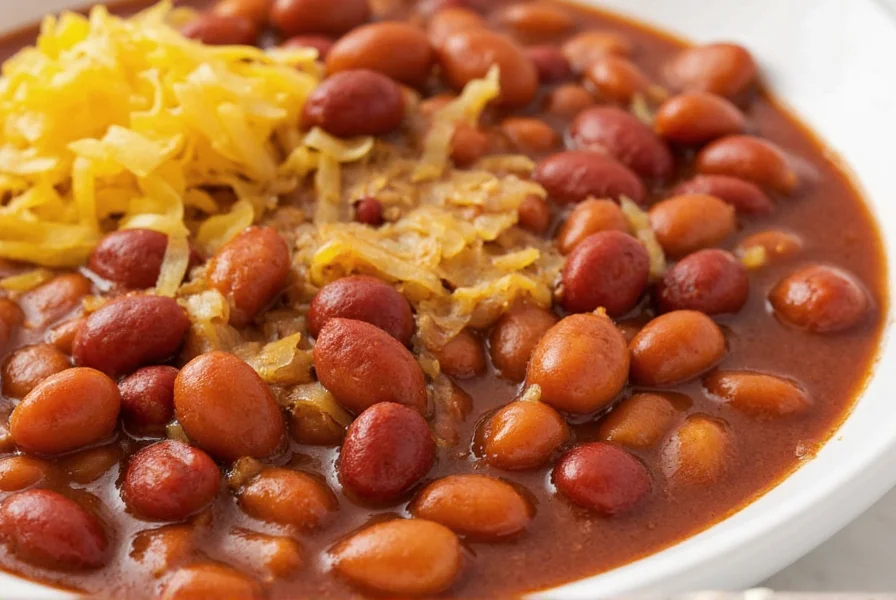The best chili recipe without beans features 2 lbs of chuck roast, 3 ancho chiles, 2 guajillo chiles, 1 tsp cumin, 1 tsp oregano, 1 onion, 3 garlic cloves, and 2 cups beef broth. Simmered for 2-3 hours, this authentic Texas-style chili delivers rich, complex flavors without beans interfering with the meat's texture. The secret lies in toasting and rehydrating dried chiles for depth, and allowing proper simmering time for flavors to meld.
For chili purists and those seeking authentic Southwestern flavor, beanless chili represents the traditional approach cherished across Texas for generations. This recipe delivers the deep, meat-forward profile that defines championship chili competitions where beans are strictly prohibited. Unlike bean-inclusive versions that create a stew-like texture, this preparation focuses on the pure interplay of meat, chiles, and spices.
Why Skip the Beans? Understanding Authentic Chili
Traditional Texas chili con carne ('chili with meat') emerged from Mexican vaqueros who used minimal ingredients while working cattle. Beans weren't part of this frontier cooking tradition—they're a later addition that changes both texture and flavor balance. Professional chili cooks consistently exclude beans because they:
- Dilute the concentrated meat flavor
- Create inconsistent texture when reheated
- Absorb spices, reducing overall flavor intensity
- Introduce starch that clouds the rich broth
Competitive chili organizations like the International Chili Society prohibit beans in official competitions, recognizing that true chili showcases meat and chile peppers as the stars.
| Chile Type | Heat Level (SHU) | Flavor Profile | Quantity |
|---|---|---|---|
| Ancho | 1,000-2,000 | Fruity, raisin-like, mild | 3 whole |
| Guajillo | 2,500-5,000 | Tangy, berry notes, medium | 2 whole |
| Chipotle | 5,000-10,000 | Smoky, spicy, complex | 1-2 pods |
Essential Ingredients Breakdown
Quality ingredients make or break bean-free chili. Unlike recipes that rely on beans for substance, this version demands careful selection:
Meat Selection Matters Most
Choose well-marbled chuck roast (80% lean) cut into 1/2-inch cubes. The fat content is crucial—leaner cuts like sirloin will dry out during the long simmer. For deeper flavor, brown the meat in batches without overcrowding the pot. This Maillard reaction creates complex flavor compounds that form the chili's foundation.

Chile Pepper Preparation
Dried chiles—not powder—provide authentic flavor. Remove stems and seeds, then toast lightly in a dry skillet for 20 seconds per side until fragrant. Immediately transfer to a bowl and cover with boiling water. Let steep 20 minutes until soft, then blend with soaking liquid into a smooth paste. This technique extracts maximum flavor while controlling heat.
Step-by-Step Cooking Process
Authentic beanless chili requires patience. Rushing steps compromises the final product:
- Brown meat properly: In batches, sear chuck roast cubes in hot oil until deeply caramelized. Remove and set aside.
- Sauté aromatics: Cook diced onion until golden, add minced garlic for 1 minute.
- Add chile base: Stir in blended chile paste and cook 5 minutes to remove raw flavor.
- Combine ingredients: Return meat to pot with beef broth, cumin, oregano, and a pinch of cocoa powder.
- Simmer gently: Cover and cook on low heat for 2-3 hours until meat is fork-tender.
- Rest overnight: Refrigerate and reheat the next day for optimal flavor development.
Pro Tips for Perfect Beanless Chili
Master these techniques to elevate your chili from good to competition-worthy:
- Skim fat regularly: During simmering, remove excess fat that rises to the surface for cleaner flavor
- Adjust consistency: If too thin, simmer uncovered; if too thick, add small amounts of hot broth
- Balance acidity: A splash of apple cider vinegar brightens flavors if chili tastes flat
- Layer spices: Add half spices at beginning, half in last 30 minutes for complex flavor profile
- Resting is non-negotiable: Overnight refrigeration allows flavors to fully integrate

Serving Traditions and Storage
Serve authentic beanless chili with traditional accompaniments that complement without overwhelming:
- Oyster crackers or warm cornbread for dipping
- Shredded cheddar or Monterey Jack cheese
- Freshly sliced jalapeños for heat lovers
- Lime wedges to brighten rich flavors
- Sour cream to moderate spiciness
Store cooled chili in airtight containers for up to 5 days in the refrigerator or 3 months frozen. Reheat gently on the stove with a splash of broth to restore ideal consistency. The flavor improves significantly after 24-48 hours as ingredients fully meld.
Variations for Dietary Preferences
Maintain authenticity while accommodating different needs:
- Game meat version: Substitute 50% of beef with venison or bison for earthier flavor
- Quick-cook method: Use pressure cooker for 45 minutes (natural release) when short on time
- Vegetarian adaptation: Replace meat with portobello mushrooms and walnuts for umami depth
- Low-sodium option: Use no-salt-added broth and increase chile varieties for flavor complexity
Frequently Asked Questions
Why don't traditional chili recipes include beans?
Authentic Texas chili con carne developed among Mexican vaqueros who used minimal ingredients while working cattle. Beans weren't part of this frontier cooking tradition—they're a later addition that changes both texture and flavor balance. Professional chili competitions prohibit beans because they dilute meat flavor, create inconsistent texture, and absorb spices, reducing overall flavor intensity.
How can I thicken beanless chili without using beans?
To thicken beanless chili naturally, simmer uncovered for the final 20-30 minutes to reduce liquid. Alternatively, mash some of the cooked meat against the pot side to release natural starches, or add 1-2 tablespoons of masa harina mixed with cold water. Avoid flour which can create a pasty texture—authentic chili relies on reduction and meat breakdown for ideal consistency.
What's the secret to deep flavor in bean-free chili?
The flavor secret lies in properly preparing dried chiles—toast them lightly before rehydrating to unlock complex compounds. Browning meat in batches without overcrowding creates essential Maillard reaction flavors. Simmering for 2-3 hours allows collagen to break down into gelatin, creating rich mouthfeel. Most importantly, resting overnight lets flavors fully integrate, transforming good chili into exceptional chili.
Can I make authentic beanless chili in a slow cooker?
Yes, but with modifications for optimal results. First brown the meat thoroughly in a skillet—don't skip this step as slow cookers don't achieve proper browning temperatures. Add prepared chile base and other ingredients, then cook on low for 6-8 hours. Remove lid for the final hour to reduce excess liquid. While convenient, slow cookers can't replicate the nuanced flavor development of stovetop simmering, so adjust expectations accordingly.











 浙公网安备
33010002000092号
浙公网安备
33010002000092号 浙B2-20120091-4
浙B2-20120091-4